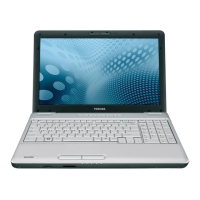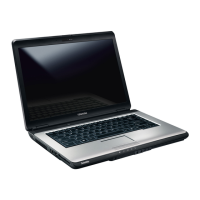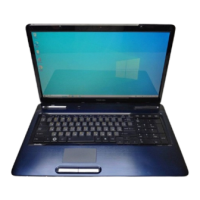
Do you have a question about the Toshiba Satellite L100-108 and is the answer not in the manual?
| Processor | Intel Celeron M 370 |
|---|---|
| Processor Clock Speed | 1.5 GHz |
| RAM | 512 MB |
| RAM Type | DDR2 |
| Screen Resolution | 1280 x 800 |
| Graphics | Intel GMA 900 |
| Networking | 10/100 Ethernet |
| Wireless | 802.11b/g |
| Battery | 6-cell Lithium-Ion |
| Weight | 2.7 kg |
| Display | 15.4-inch |
| Ports | 3 x USB 2.0, VGA, headphone/microphone jacks, modem, Ethernet |
| Operating System | Windows XP Home Edition |
Safety warnings in multiple languages regarding laser product hazards.
Covers processor, chipset, memory, display, and storage options.
Explains various ports like USB, external monitor, PC Card slot.
Highlights unique functions like hot keys, power saving, and system utilities.
Step-by-step instructions for installing the battery and connecting the AC adaptor.
Procedures for turning on the computer and initial OS setup.
Explains how AC connection and battery status affect power.
Covers battery types, charging, life extension, and replacement.
Explains Boot, Hibernation, and Standby modes and their usage.
Steps to launch and use the hardware setup utility.
Guidelines for identifying and resolving computer problems.
Troubleshooting AC power, battery, and overheating problems.
Solutions for common issues with keyboard, LCD, HDD, and drives.
Lists supported VGA text/graphics modes and display settings.
Details form factor, compatibility, OS, and data rates for wireless cards.











